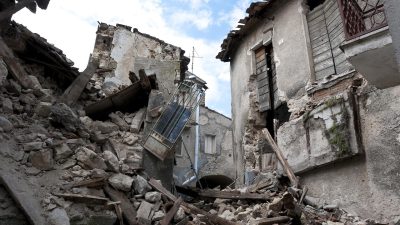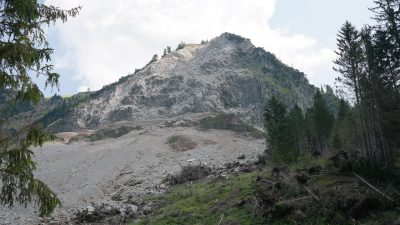China’s Forgotten Disaster That Shook A Nation
The 1969 Yangjiang Earthquake was a disaster that left a deep scar on China’s history. Striking the Guangdong province with a magnitude of 6.4, the earthquake reduced entire villages to rubble, killing thousands and displacing even more. The tremors, felt across a wide region, revealed the vulnerabilities in China’s infrastructure and disaster preparedness at the time.
Despite its significant impact, this earthquake often remains overshadowed by other major disasters. The sheer scale of destruction, coupled with inadequate response measures, resulted in devastating consequences that would take years to overcome. For the survivors, it was not just the earth that had shaken, but their entire existence.
The Untold Truth Behind the 1969 Yangjiang Earthquake
The true impact of the Yangjiang Earthquake has often been shrouded in secrecy and downplayed by official sources. The government, controlling the media narrative, kept many crucial details from the public. Official reports claimed a death toll of just over 3,000, yet eyewitness accounts and independent researchers suggest the real number could be much higher.
Another aspect of the hidden truth lies in the slow response from authorities. In the immediate aftermath, emergency aid was limited, and survivors were left to fend for themselves. The lack of transparency only added to the suffering, as families struggled to find missing loved ones while grappling with the loss of their homes.
Shattering Lives: The Hidden Consequences of the 1969 Yangjiang Earthquake
- Unreported Deaths and Missing Persons – Thousands perished, yet many victims were never accounted for. Entire families disappeared, leaving behind unanswered questions and unmarked graves.
- Long-Term Psychological Trauma – Survivors suffered from severe post-traumatic stress, with many developing anxiety and depression due to the horrors they had witnessed.
- Economic and Social Collapse – Small businesses, markets, and industries were wiped out, pushing families into poverty. The local economy took decades to recover from the devastation.
- The Shadow of Disease and Famine – The destruction of infrastructure led to contaminated water supplies and food shortages, causing outbreaks of disease among displaced populations.
Why the 1969 Yangjiang Earthquake Was More Destructive Than We Thought
At first glance, a 6.4 magnitude earthquake might not seem like the most catastrophic event. However, multiple factors made this disaster far deadlier than expected. The location and terrain of Yangjiang played a significant role. The region’s geology amplified the tremors, causing more severe ground shaking and widespread destruction.
Another key reason was the poor construction of buildings. Most houses in the area were made of weak materials, unable to withstand the quake’s force. When the earthquake struck, buildings collapsed like dominoes, trapping thousands underneath the rubble. Additionally, the lack of a warning system meant residents had no time to prepare or evacuate, turning the disaster into a nightmare.
The Aftermath of the 1969 Yangjiang Earthquake: Was China’s Response Enough?
China’s response to the Yangjiang Earthquake was slow and inadequate, leaving survivors to struggle for days without aid. The immediate rescue efforts were unorganised, with authorities scrambling to deploy teams long after the critical 72-hour survival window had passed. Those who were trapped beneath rubble were largely left to their fate.
The government’s reluctance to acknowledge the full scale of the disaster further delayed recovery efforts. International aid was not sought, and resources were scarce. The rebuilding process took far longer than it should have, and many survivors were forced to live in makeshift shelters for years.
A Wake-Up Call: What We Missed About the 1969 Yangjiang Earthquake
- Ignored Warning Signs – Minor tremors had been reported in the region days before the major quake, but no action was taken to alert residents.
- Lack of Preparedness – There were no earthquake drills, emergency plans, or evacuation procedures in place.
- Government Secrecy – Many details about the earthquake’s true impact were never revealed, leaving historians to piece together the real story years later.
- Lessons Still Unlearned – Even today, many areas in China remain vulnerable to earthquakes due to similar infrastructure and lack of preparation.
Could We Have Prevented the 1969 Yangjiang Earthquake? The Shocking Facts
While earthquakes cannot be prevented, the devastation they cause can certainly be minimised. The Yangjiang disaster exposed the flaws in China’s infrastructure and city planning. Had stronger, earthquake-resistant buildings been in place, the death toll would have been significantly lower.
Moreover, early warning systems and better education could have saved thousands of lives. Other earthquake-prone countries have since implemented strict building regulations and public safety campaigns—something China was lacking at the time. The failure to act on warning signs remains one of the biggest regrets in the country’s disaster history.
Conclusion: The 1969 Yangjiang Earthquake and Its Lasting Impact
The devastation of the 1969 Yangjiang Earthquake serves as a grim reminder of nature’s fury and human shortcomings. While China has since improved its earthquake preparedness, the lives lost and the suffering endured cannot be undone.
The earthquake was not just a disaster—it was a wake-up call. It revealed weaknesses in government response, exposed the dangers of poor infrastructure, and highlighted the need for greater transparency in disaster reporting. The lessons from Yangjiang must never be forgotten if future tragedies are to be avoided.
FAQs: The 1969 Yangjiang Earthquake in Short
Q1. What was the magnitude of the 1969 Yangjiang Earthquake?
A1. The earthquake had a magnitude of 6.4, causing significant destruction and loss of life.
Q2. How many people died in the Yangjiang Earthquake?
A2. Officially, over 3,000 deaths were reported, but many believe the true number was much higher.
Q3. Was there any warning before the earthquake?
A3. Minor tremors were felt before the quake, but no official warning or evacuation was issued.
Q4. How did the Chinese government respond?
A4. The response was delayed and inadequate, with survivors struggling for aid and assistance.
Q5. What were the long-term effects of the earthquake?
A5. The disaster exposed weak infrastructure, led to economic struggles, and reshaped China’s approach to earthquake preparedness.
Reference:
“1969 Yangjiang earthquake – Wikipedia”
“Coulomb Stress Changes of the Devastating 26 July 1969 Yangjiang Earthquake, South China Coastal Region – NASA/ADS”
http://ui.adsabs.harvard.edu/abs/2018AGUFM.T13F0285Z/abstract
“A devastating earthquake in a stable continental region – SpringerLink”
“M 5.7 – 27 km SW of Yangjiang, China – USGS Earthquake Hazards Program”




